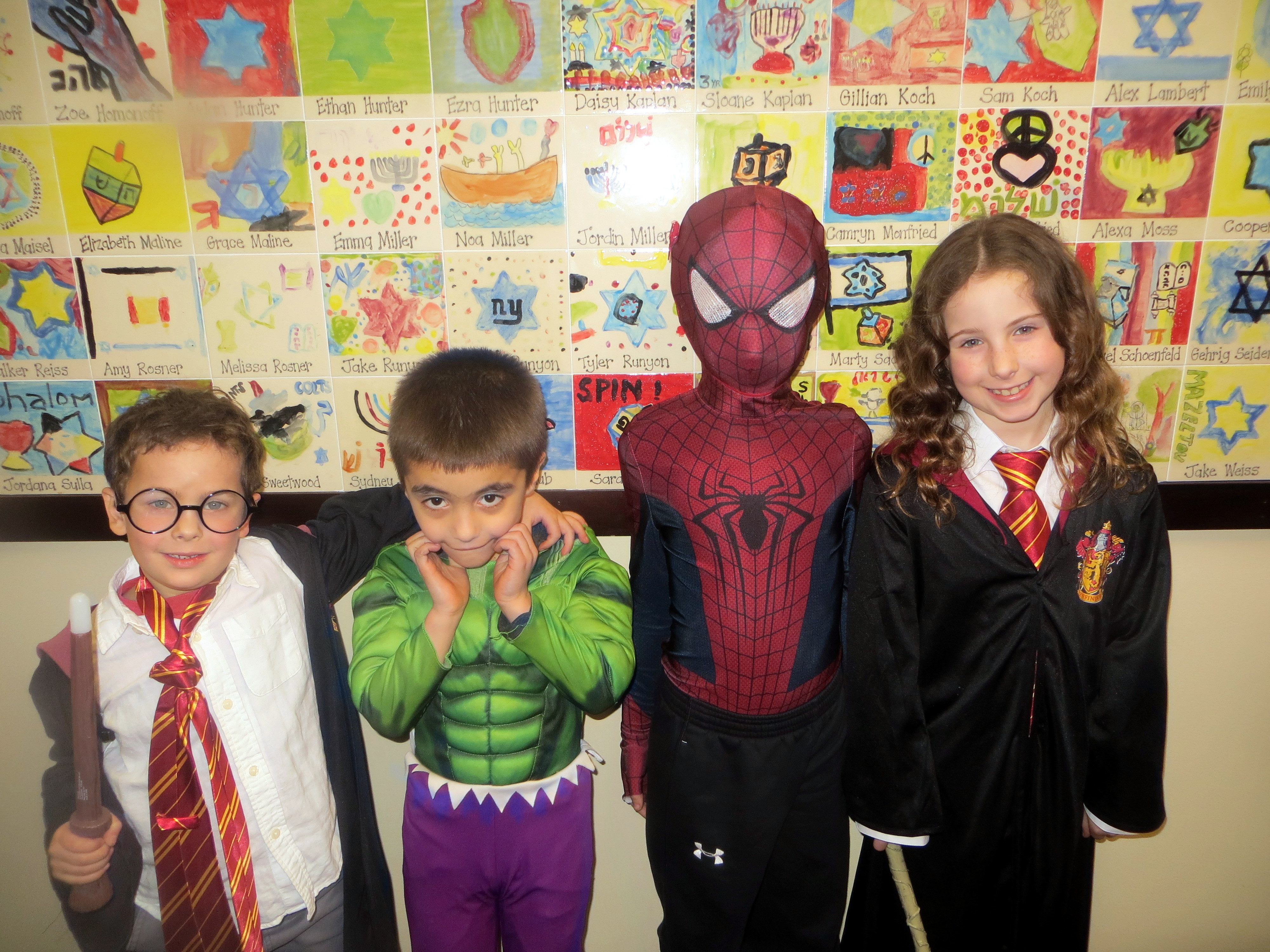
[slideshow_deploy id=’899′]
BY HILLARY VIDERS
SPECIAL TO NORTHERN VALLEY PRESS
Closter, New Jersey — Temple Emanu-El in Closter held its annual Purim celebration on Wednesday, Feb. 28. Billed as a “Purim Palooza,” more than 400 children, parents and clergy attended the joyous event.
One of the most festive and popular of the Jewish holidays, Purim has all the excitement, color and showiness of Mardi Gras, as well as the costume extravaganza of Halloween.
The story and traditions of Purim
Purim celebrates the deliverance of the Jews from imminent doom at the hands of their enemies in ancient Persia, as told in the biblical Book of Esther. It is celebrated on the 14th day of the Hebrew month of Adar, which usually falls sometime in February or March.
Purim is so-called because the villain of the story, Haman, cast “purim” (which are lots, as in a lottery) to destroy the Jews, yet failed.
According to the Book of Esther, Haman, royal vizier to King Ahasuerus (presumed to be Artaxerxes I of Persia), planned to kill all the Jews in the empire, but his plans were foiled by Mordecai and his cousin and adopted daughter Esther, who had risen to become queen of Persia. The day of deliverance became a day of feasting and rejoicing.
A central part of the Purim celebration is the reading of the Purim Story from the Scroll of Esther, called the Megillah, usually done in a synagogue. Whenever Haman (the villain’s) name is mentioned, people boo, howl, hoot and shake noisemakers (groggers) to express their dislike of him.
In many synagogues, both children and adults attend the Megillah reading in costume. This tradition of dressing up is based upon the way Esther concealed her Jewish identity at the beginning of the Purim Story. At the conclusion of the Megillah reading, many synagogues put on plays that reenact the Purim Story and poke fun at the villain.
Traditionally people used to dress up as characters from the Purim story, such as Esther and Mordecai. Nowadays, however, people enjoy attending Purim parties in wide range of costumes, including as superheroes, wizards and princesses.
Food, food and more food
As with most Jewish holidays, food plays an important role in Purim. For instance, people are commanded to send mishloach manot to other Jews. Mishloach manot are baskets filled with food and drink. According to Jewish law, each mishloach manot must contain at least two different kinds of food that is ready to eat. Most synagogues will coordinate the sending of mishloach manot, but some people make and send these baskets on their own.
In addition to sending mishloach manot, Jews are commanded to be especially charitable during Purim. During this time, Jews will often make monetary donations to charity or will give money to those in need. This tradition is known as mattanot la-evyonim.
Also on Purim, Jews enjoy a festive meal, called the Purim se’udah (meal), as part of the holiday celebration. People often serve special Purim cookies called hamantaschen, which means “Haman’s pockets,” during the dessert course.
Purim palooza
At Temple Emanu-El, the traditions of Purim were in full splendor. The synagogue was transformed into a carnival, where there were entertainers, games, face painting, balloon artists, prizes and raffles.
Hundreds of children and parents came dressed in an array of festive costumes. There was a bevy of princesses, wizards, ninjas, and Disney characters. Many children sported inventive and unique getups, such as a large box of Chinese food, a complete vending machine filled with snacks, an astronaut in full gear and a Whoopee cushion.
The parade of children and parents clad in festive costumes was joined by synagogue staff members who were also wearing fun and furry costumes – Rabbi David-Seth Kirshner; Associate Rabbi Alex Freedman; Cantor Israel Singer; Educational Director Adam Schwartzbard; Tamara Ween, the school’s youth and family program director; Naama Heymann, assistant principal; Christiina Buchert, religious school administrator; Julia Vazquez, administrative assistant; and Jeanine Corrubia, temple administrator.
Throughout the synagogue, there were activities and entertainers. In particular, everyone loved the performance by Tom from JPZ Entertainment, who dazzled the audience with magic, juggling and ventriloquism.
Lively music was provided by BAM Entertainment, and Colors the Clown thrilled kids as she twisted balloons into elaborate figures. Patti Meyer set up shop in a hallway where she did face painting for boys and girls.
In the sanctuary, Cantor Singer read the Megillah, which elicited a cacophony of booing and noisy groggers whenever he mentioned the name “Haman.” Singer, whose voice is legendary, didn’t just recite the Megillah, he chanted it.
The Purim dinner at Temple Emanu-El followed the Purim tradition deliciously. There were multiple tables filled with refreshments, hot dogs, chicken, salads, vegetables, fruit platters, hamatashen and snacks.
The importance of Purim
Purim is rich in history and celebrated with nostalgia and wonder. Although the Megillah scrolls date back to medieval times, the holiday of Purim still resonates in 2018 with its message of freedom, respect and tolerance. Jewish identity is reinforced through such meaningful and joyous Jewish experiences like Purim parties such as the one at Temple Emanu-El that take place throughout the world.
Photos by Hillary Viders
